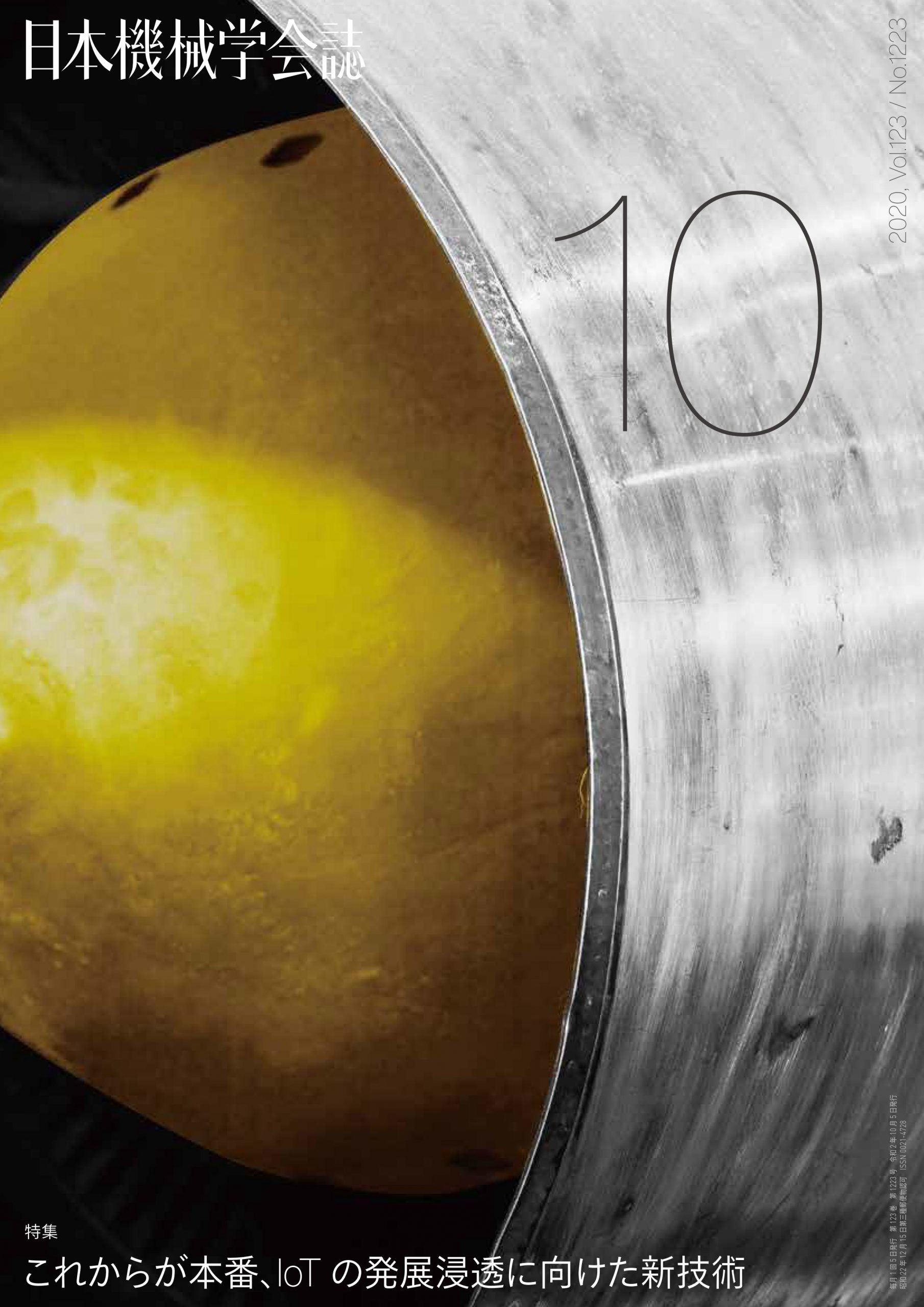論文アクセスランキング
論文アクセスランキング 日本機械学会学術誌(和文) 年間アクセス数トップ10

 Ni基超合金Alloy718合金の疲労強度に及ぼす表面加工層の影響(第2報:結晶塑性有限要素法を用いた残留応力解放の検討)
Ni基超合金Alloy718合金の疲労強度に及ぼす表面加工層の影響(第2報:結晶塑性有限要素法を用いた残留応力解放の検討)
蓮沼 将太, 波田野 明日可, 泉 聡志, 酒井 信介
日本機械学会論文集(2017) DOI:10.1299/transjsme.16-00264
In this study, the effect of machined surface layer on residual stress relaxation was investigated. In previous study, low cycle fatigue strength was affected by residual stress. However, residual stress relaxation was complex because local plastic strain occurred by stress near yield stress. Also, machined surface layer affect the yield stress. Therefore, machined surface layer was modeled using the crystal plasticity model, i.e. plasticity model based on crystallographic deformation mechanics. To describe the microstructure of plastic deformation layer, initial dislocation density and back stress near surface were changed. To describe the microstructure of fine grained layer, grain size near surface was changed. Residual stress relaxation was simulated by crystal plasticity finite element method. Three types of machined surface layers were modeled. Two kind of strain amplitude condition was simulated. In simulation results, local plastic strain was occurred under global elastic condition. Residual stress after cyclic load was different from machined surface conditions under low strain loading. Residual stress was largely relaxed in all cases under high strain loading. Comparing fatigue life of experimental results, simulation results were thought to be valid. Therefore, residual stress relaxation is able to be predicted using this model. Hardening in plastic deformation layer prevents yield by tensile load. However, plastic strain was occurred in plastic deformation under compression load. On the other hand, fine grain layer prevent yield by not only tensile but also compression.
 多量の含油排水からの油分回収およびBDF製造
多量の含油排水からの油分回収およびBDF製造
近藤 千尋, 佐野 広季, 一宮 暢希, 山根 浩二, 河﨑 澄
日本機械学会論文集 (2019) DOI:10.1299/transjsme.18-00340
This paper describes how to produce a biodiesel fuel (BDF) from the waste soup of ramen noodles, especially focusing on the recovery process of the oil (triglycerides) from a large amount of waste soup or the oily wastewater disposed of by pouring it down the sink by a ramen restaurant. By combining a semi-transparent bucket (~6 L) with a cock and solvent extraction, it is shown that oil can be recovered easily from 300 or more bowls of ramen noodle waste soup, with an energy profit ratio (EPR) of more than 5.2. The initial cost of the bucket is about 1600 yen, so it has little effect on the price of the BDF produced from the oil in the ramen noodle waste soup, and it is shown that the increase in running cost to produce BDF by this method is about 2.3 yen/L if the rate of recovery of hexane (solvent) is over 99%, which is approximately equivalent to the production cost of waste-cooking-oil BDF production by previously reported methods. Furthermore, in the case of applying the proposed method based on the solvent extraction to the recovery of oil from the oily wastewater disposed of by a ramen noodle restaurant, it is shown that oil can be recovered from the waste soup of ramen noodles just after disposal as well as from the oily wastewater that spent one day in the grease trap. In the former case, EPR is 5.0, and the estimated amount of BDF is greater than 100 L/month for one restaurant. However, in the case of using the oily wastewater from the grease trap, EPR is less than 2.0 because of the reduction of yield of BDF due to a greater oxidation deterioration of the recovered oil, when the alkyl catalyst method is used. Therefore, it is desirable to recover oil from the oily wastewater at the drain pipe just after the sink.
 離散化モデルを用いたHCCIエンジンの制御シミュレーション
離散化モデルを用いたHCCIエンジンの制御シミュレーション
林 卓哉, 山崎 由大, 金子 成彦, 疋田 孝幸, 水野 沙織, 藤井 拓磨
日本機械学会論文集 (2018) DOI:10.1299/transjsme.17-00325
Homogeneous charge compression ignition (HCCI) engine has some advantages such as high efficiency and low emissions. On the other hand, it has challenges that it is difficult to avoid knocking and misfire. Therefore, the precise control system of HCCI combustion is necessary. In this paper, firstly, a control-oriented model which was discretized to several representative points in 1 cycle of an HCCI engine was developed. Secondly, a control system based on the modern control theory was constructed. It consists of a feed-forward controller and a feedback controller with Kalman filter to estimate state variables. The controller based on only a sole linear model has a disadvantage that its performance deteriorates except when the controller works at equilibrium points. Therefore, a gain-scheduling controller was introduced to the nonlinear system. The control simulation was conducted for the nonlinear plant model with the developed gain-scheduling controllers, and both IMEP and the in-cylinder pressure rising rate were controlled over a wide range IMEP.
4位[↓] |
機械学習を用いたしゅう動面状態監視システムに関する研究
橋本 優花, 本田 知己, 持田 裕介, 杉山 和彦, 中村 由美子, 高東 智佳子日本機械学会論文集 (2018) DOI:10.1299/transjsme.18-00275 |
5位[↑] |
電磁比例弁内のスプールに作用するクーロン摩擦力に起因した不安定振動の解析と安定化させるための設計法
山藤 勝彦, 山本 建, 澤田 賢治日本機械学会論文集 (2017) DOI:10.1299/transjsme.16-00553 |
6位[↑] |
温度と湿度による樹脂材料の強度低下の予測
澤田 祐子, 越前谷 大介日本機械学会論文集 (2019) DOI:10.1299/transjsme.18-00505 |
7位[NEW] |
モンテカルロ法を用いたドラム式洗濯乾燥機の脱水起動シミュレータ
上甲 康之, 黒澤 真理, 高橋 幸太郎日本機械学会論文集 (2017) DOI:10.1299/transjsme.17-00140 |
8位[↓] |
樹脂材料の強度低下予測(温度と湿度による加速評価)
澤田 祐子, 越前谷 大介日本機械学会論文集 (2019) DOI:10.1299/transjsme.18-00341 |
9位[NEW] |
ランプ状外乱抑圧のための状態推定器に基づくPredictive Functional Control制御系の設計
佐藤 俊之, 原 裕樹, 永瀬 純也, 齋藤 直樹, 嵯峨 宣彦日本機械学会論文集C編 (2013) DOI:10.1299/kikaic.79.4890 |
10位[NEW] |
1.8GPa級超高強度フェールセーフボルトの耐遅れ破壊特性
木村 勇次, 井上 忠信, 中田 隆之, 福田 又一日本機械学会論文集 (2018) DOI:10.1299/transjsme.17-00493 |
キーワード:論文アクセスランキング


表紙の説明:これは、推力5tonターボファンエンジンFJR710形の排気口部分である。1975年に通商産業省工業技術院の大型工業技術研究開発制度によって開発された。ブラッシュアップしたエンジンは、航空自衛隊のC1輸送機をベースに開発された短距離離着陸ジェット機(STOL)飛鳥に4基搭載され500mで離着陸できた。
[日本工業大学工業技術博物館]